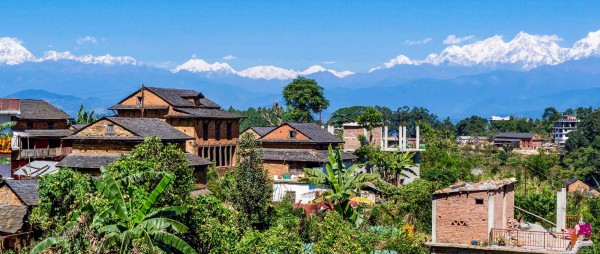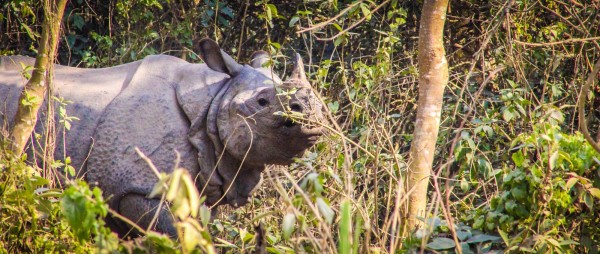Important Information
Region
Family Tours
Duration
3 Days
Max Altitude 1300 Meters
Best Season Whole Year
Activity Per Day
4-5 hours per day
Grade
Level 1
Group Size
2 - 50 people
Transportation Jeep/Bus
A three-day Kathmandu city tour is a family and friend group tour that is child-friendly. Heritage sites are the attractions that include both natural and artificial monuments, listed by UNESCO as an endangered property of the world. The heritage sites have their own unique features and value, which differentiate them from other sites. Explore the unique art and architecture, culture and tradition, and unparalleled features of the landscape of Nepal, which is a UNESCO-listed and world-famous site. Descriptions of the monuments and attractions are given below.
- Swayambhu Stupa
Swayambhu Stupa is the most sacred among the Buddhist pilgrimage sites in the Kathmandu Valley. The monument is listed under the UNESCO World Heritage Sites. The myth of Swayambhu is closely related to the origin of the Kathmandu Valley, and it is also the oldest religious site in the valley. Swayambhu stupa is famous among the Newari Buddhists, but the sites are centers for all the Buddhist and Hindu people of the valley. There is a long stair from the eastern side of the stupa, which is said to be 365 steps and was built by King Pratap Malla, who was the famous king of Kathmandu. You will have a spectacular view of Kathmandu Valley from the hilltop of Swayambhu Stupa.
- Kathmandu Durbar Square
Kathmandu Durbar Square holds the same popularity as another durbar square of the valley. The main monuments inside the periphery are the Kumari Ghar (House of Living Goddess), Durbar Square and its courtyards, Basantapur Tower, Taleju Temple, and other different temples’ constructions in its surroundings. The white part of the Durbar Square was the conference hall and was built in European style during the Rana regime. The northern side of the Durbar Square is a busy street of local vendors and street markets. The alley leads you towards the old and typical market junction of Indra Chowk and the Asan Tol. - Patan Durbar Square
The Kathmandu Valley consists of three main cities: Kathmandu, Patan, and Bhaktapur. Before the unification of greater Nepal done by King Prithvi Narayan Shah in the 18th century, these three cities were independently ruled as a separate kingdom. These old cities of Kathmandu Valley each have a Durbar Square (Royal Palace).
Among them, Patan Durbar Square exhibits the fine wood and metal art and craft on the struts, windows, and doors of the palaces. There are beautiful courtyards in the palace periphery where you will see fine art and architecture of typical Nepalese artists. The Patan Museum inside the palace is the finest and the best-managed collection of wooden and metal art, where you will also observe the detailed procedure of making metal statues in the museum. The palace frontier is filled with different styles of temple structures. Due to the fine art and architecture which fills the Patan city, it is also known as Lalitpur (The city of Beauty) - Bhaktapur Durbar Square
Bhaktapur Durbar Square is in the city of Bhaktapur, which means the city of devotees. This site is 13 km away from Kathmandu city and is also the smallest district in the whole of Nepal. Bhaktapur Durbar Square is famous for its magnificent Golden Gate, which displays a masterpiece of metal art existing from the 18th century. The Durbar Square also portrays the 55-window palace, which is an example of fine Nepalese wooden art craft. The frontier periphery of Durbar Square has various structural temples and a resting spot for the local people. You will also visit the museum of stone sculpture and the collection of paper paintings in the same building as the palace. You will also visit the alley of the old cities, where you will find interesting shops and the local lifestyles of the people. The pottery-making activities and farmers drying cereals in the sun will exhibit the 12th-century activities of the cities. Other famous sites in Bhaktapur are the five-story temple, Dattatreya temple, and the Peacock Window.
- Namo Buddha
Namo Buddha pilgrimage sites are popular among Buddhist followers from different corners of the world. It is located 40km away from Kathmandu city, which takes about 2 hours to drive towards the eastern side. The place has the religious history of the previous life reincarnation of Lord Buddha, who sacrificed his body for the mother tigress, which was in a state of death because of hunger. The place is believed to be highly spiritual, where Shakyamuni Buddha achieved great compassion. Among the three most holy Buddhist stupas in the valley, Namo Buddha stupa is one of them, which is constructed over the holy hair and bones of Buddha’s previous live body. This site is equally popular with its calm and peaceful environment, which is isolated from the crowded city of Kathmandu Valley. People visit these sites for many purposes; some visit for religious purposes, and some for recreational purposes. This place is also famous for the meditation retreat center for foreigners.
- Changu Narayan Temple
The ancient temple is situated on the hilltop of Change or Dolagiri, which is located 12 km east of Kathmandu and a few miles north of Bhaktapur. Changu Narayan Temple is considered to be the oldest structure in the history of Nepal. The Kashmir king gave his daughter in marriage to the Bhaktapur king, and the temple was named after her. This heritage site is located on a very calm and peaceful hilltop from where you will witness the spectacular view of the surrounding cities of the valleys and the breathtaking view of the great Himalayas. While visiting these sites, you need to walk up for ten minutes from the vehicle stop. On your way to the temple, you will see different art and crafts shops and workshop exhibitions. Then the temples’ periphery is filled with ancient statues of Hindu gods and goddesses, temples, and a chariot for the festival, which is laid on the corner of the courtyard. The main temple is built with two-level roofs dedicated to the Lord Vishnu. There are two ancient stone pillars; the inscription written in Sanskrit is the oldest structure in Nepal, which dates back to 464 AD by Lichchhavi King Mandev. The sites are examples of much fine stone art and the center of religious belief.
- Pashupatinath Temple
Pashupatinath Temple is the holiest Hindu temple in the whole of Nepal, where devotees from far from India and other Hindu people come to visit this holy site. Pashupati means the Lord of the Beast, and people believe that if once in a lifetime they visit the temple, in their next life they don’t need to be reborn as a beast or animal. The temple is dedicated to Lord Shiva, and the main sanctum of the temple is decorated with the Shiva Lingam. Non-Hindu people are not allowed to enter the main temple and can only peep from the outside. But one can visit the whole temple periphery from the viewpoint, which lies opposite the temple across the river.
The temple is situated near the holy river of Bagmati, and the cremation activities are done aside from the holy river by the Hindu people. You will see a series of white temples across the river on the opposite side of the main temple. These stone-made temples are the shelters for the Sadhus, who are the followers of Lord Shiva. While visiting the holy sites, at the same time you will see the ritual activities done by the family priest, which are done for their passed-away family members. You will see both the culture and art in these holy sites of the Pashupatinath temple.
- Boudha Stupa
Boudha Stupa is the largest stupa in Nepal and, somehow, in the whole world. The stupa is decorated with golden polish on the harmika and the white dome constructed on the mandala shape of the base, and small mani wheels surround it. The stupa is the center of the Buddhist followers, but non-Buddhists also worship these sites because in Nepal people respect each other's religion. You will see people from the Himalayas of Nepal and the Tibetan people making circumambulation to the huge stupa.
The stupa area is very congested, but you will find a neat and calm environment inside the main gate of the stupa. There are many shops selling thanka paintings, statues, and prayer beads around the stupa. A rooftop cafe that offers a wonderful view of the stupa and the monasteries, where you will see the ritual activities done by the Tibetan Buddhist lama. The big statues of Buddha and other Bodhisattvas have magnificently decorated the main chapel of the monastery. The ambiance of the Boudha stupa will really give a positive vibrancy to your spirituality.
If you are looking for a different itinerary than the itinerary here, please customize your trip.
Include
Tour Guide charges
Sightseeing transportation
Mineral water
Namo Buddha Guest house
All Entrance Fee
All land transportations as mentioned in the itinerary
Exclude
All Meals & Drinks
Personal Expenses
Other expenses not included in include section
Important Information
CHECKLISTS FOR KATHMANDU TOUR
- Valid passport (valid for six months from the date of your trip)
- MasterCard, Visa Credit, and Debit Cards are accepted in Nepal. However, some cash is highly recommended.
- Mobile (if your cell phone is from CINGULAR USA or ATNT (USA) operators, then your cell phone will work in Nepal.)
- Clothing (Layered clothes, windproof and waterproof jackets, fleece pullovers, thermal base layers, hiking pants, shorts, headwear, footwear, and other items according to your needs)
- Personal Items and Toiletries (First-Aid Kit, Iodine tablets or a UV purifier to treat water, Sun Protection)
- Travel and Health Insurance
- Trekking gear and equipment(if you have your own trekking gear and equipment, such as trekking poles, sleeping bag, and shoes, then you can bring them; else you can rent them in Thamel, Kathmandu). Read more for trekking gears and peak climbing gears.
DRESS CODE FOR VISITING FORTRESSES, MONASTERIES, AND TEMPLES
- Shirt (either half or full sleeve)
- Full pants/long skirts
- Any type of shoes with socks
- No Hats, No Umbrella, No Slippers, No t-shirts, No short skirt, and No half-pants
- Photographs allowed in the courtyard only.
Booking must be done atleast before 3 days of your arrival. Please let us know your other information regarding this trip. This is the right tour, you can amend it as per your requirement and interest. We do all kinds of reservations and bookings related to Flights, vehicles, and hotels. We would love to hear from you to serve a rewarding trip.
Frequently Asked Question
The most important consideration for any tour is staying warm and dry, lightweight, breathable, moisture-winking under layers are highly recommended. Insulating layers and jackets are necessary.
No questions found matching your search. Try different keywords or browse all questions above.
| {{type.min}} - {{type.max}} Pax {{type.name}} - {{type.desc}} | {{type.display_price}} per people |
Extra prices:
Let us help you decide Inquiry
You might also like

- 3 days
- Family Tours
Bandipur - Well Preserved Hill Top Town
Bandipur, an untouched Newari settlement beautifully preserved town, 143 kilometers away from the capital city of Nepal lies midway between Kathmandu and Pokhara in the Tanahun district of western Nepal. Your visit to Bandipur will leave you speechless, the sacred cave, temple, shrines,...

